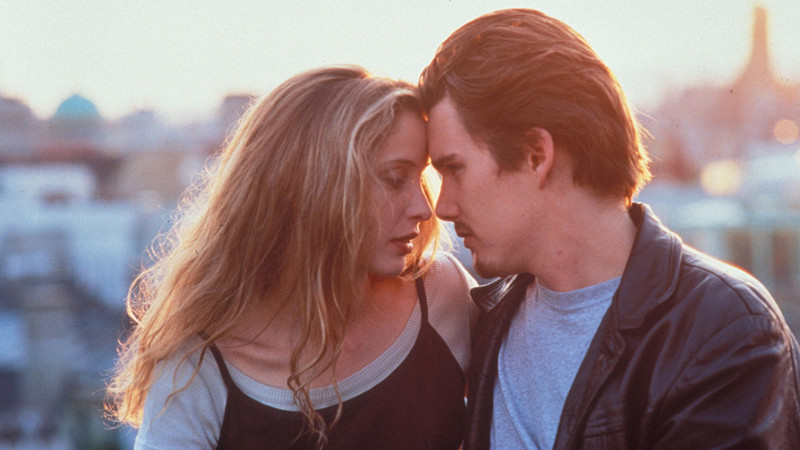
Movies sometimes take us on a journey of months, years or decades, but there are also some films which manage to fit in complex stories, actual character development and startlingly real emotion inside a small 24 hour window.
There are multiple ways to utilise time. The filmmakers may have used real time, flashbacks, alternative realities or time loops, but they still follow the same ticking clock which seems to make everything all the more intense.
1. 12 Angry Men (1957)
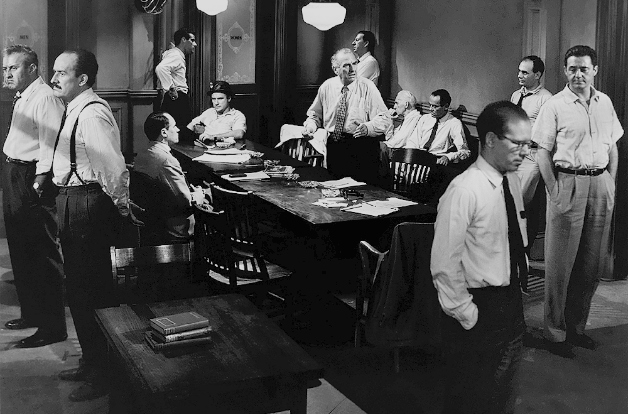
Sidney Lumet’s directorial debut marks one of the greatest films ever made. This dramatic trial film tells the story of a jury made up of 12 men as they deliberate the guilt or acquittal of a defendant on the basis of reasonable doubt. This group of men whose personalities differ to such great degrees that result in intense conflicts when trying to acheive a unaminous verdict.
The film never states whether the defendant is innocent or guilty but rather focuses on whether the jury has a reasonable doubt – the belief that a defendant is innocent until proven guilty – about his guilt.
When the first ballot is taken, 11 jurors agree, and only Juror No. 8 (Henry Fonda) holds out to try and actually discuss the case before declaring his guilt. Throughout, the jurors argue, explain their opinions, reevaluate evidence, and go through the story of the boy they may condemn to death.
With the exception of the film’s opening, brief final scene and two short scenes in an adjoining washroom, all of which only take 3 minutes, the entire movie takes place in the hot, claustrophobic jury room. Lumet’s “lens plot” makes the room look smaller as the story continues since he gradually changes to lenses of longer focal lengths, to make it seem like the walls were closing in.
2. Rashomon (1950)
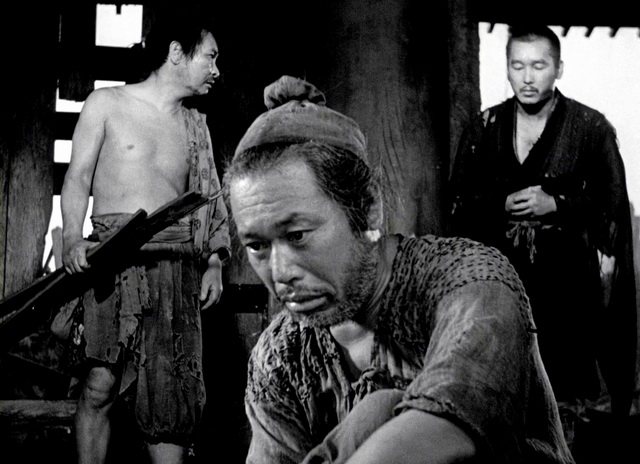
One of the most influential films ever made, Akira Kurosawa’s Japanese jidaigeki film has marked the first use of flashbacks that disagreed about the action they were flashing back to.
The film opens with a woodcutter Kikori (Takashi Shimura), a priest Tabi Hōshi (Minoru Chiaki) and a commoner (Kichijiro Ueda) who are all seeking shelter from the torrential rain by staying underneath the Rajōmon city gate.
The woodcutter and the priest have just come from a trial of a murder they were witnesses to three days earlier. They describe the crime through flashbacks of three different points of views that they heard from the trial earlier that day. The flashbacks of the trial themselves flashback to the actual crime three days earlier which show the different versions of the people who are describing them.
The woodcutter claims he found the body of a murdered samurai while the priest says that he saw the samurai with his wife traveling the same day the murder happened. At the trial, they meet the local bandit accused of killing the Samurai as well as raping his wife.
Together with his testimony, the testimony of the dead Samurai himself through a medium and the Samurai’s wife’s testimony – the same story is retold multiple times not only through different perspectives, but with different self-confessed killers – leaving the audience as well as the commoner being told the story confused as to what is really true and what is false.
The emotive, silent acting ability together with cinematographer Kuzuo Miyagawa’s masterful use of lighting contributes to Kurosawa’s success. The film was one of the first Japanese films to make such an impression in the West, and even won the Academy Award as best foreign film, as well as setting box office records for a subtitled film.
3. Reservoir Dogs (1992)
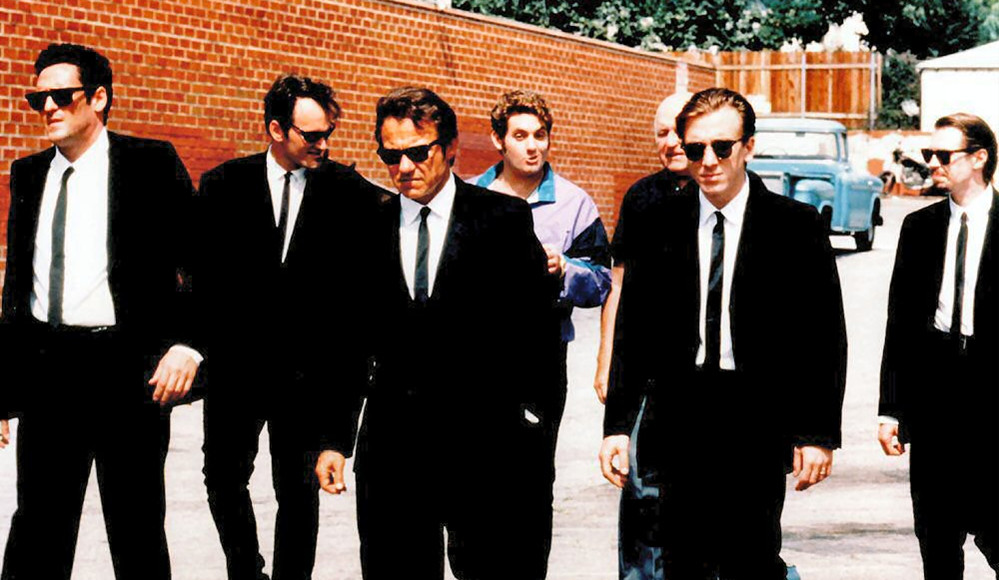
Quentin Tarantino’s directorial debut follows eight men before and after their botched diamond heist. All the characters are given pseudynyms so as to protect their identity from each like Mr. Orange (Tim Roth), Mr. Pink (Steve Buscemi), Mr. Blue (Edward Bunker), Mr. Brown (Quentin Tarantino), Mr. Blond (Michael Madsen) and Mr. White (Harvey Keitel). The others are mob boss Joe Cabot (Lawrence Tierney), the organizer of the heist, and his son and underboss, “Nice Guy” Eddie Cabot (Chris Penn).
Opening with a Tarantino trademarked long discussion scene before his pop opening sequence about Madonna’s “Like A Virgin” and the ethics of tipping, the film soon skips straight into a post-heist bloody mess that is slowly explained through different character’s flashbacks and comments about what actually happened during the heist and why the police responded so quickly.
The characters rendezvous at an empty warehouse, with Orange bleeding profusely, White looking after him and Pink concluding the job was a setup and that one of them must be a rat. Once the psychopathic Blond arrives with a police officer hostage, they beat him in an attempt to discover who the informant is and how they can get out of this colossal mess.
4. Run Lola Run (1998)
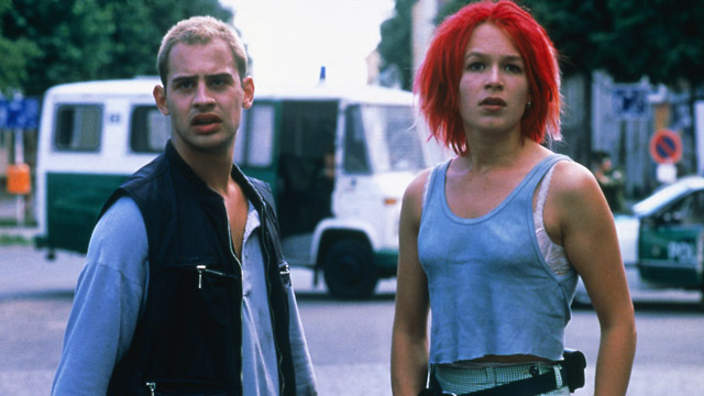
Tom Tykwer’s German thriller follows Lola (Franka Potente) who needs to obtain 100,000 Deutsche Mark in twenty minutes to save her boyfriend, Manni’s (Moritz Bleibtreu) life. There are three alternate versions of Lola’s twenty minute runs, each time with small differences that affect the outcome and the fate of the characters.
The film begins with Lola receiving a phone call from a distraught Manni who relied on Lola to take him and the 100,000 marks he was responsible for, to his boss. Lola’s moped was stolen and so Manni is forced to travel by subway.
The police come on, and Manni instinctively leaves and accidentally leaves the bag of money on the train. He calls Lola from a phone booth, and explains that if he doesn’t gather the cash before his boss arrives, he’s a dead man – leading to Lola run to her father to get the money.
The film is highly stylised with utilisation of animation, speedup, instant replay, black and white, rewind, flashframes and more to reflect the parallel timelines influenced by Lola’s choices acting as a butterfly effect.
5. ‘Before’ Trilogy (Before Sunrise (1995), Before Sunset (2004), Before Midnight (2013))
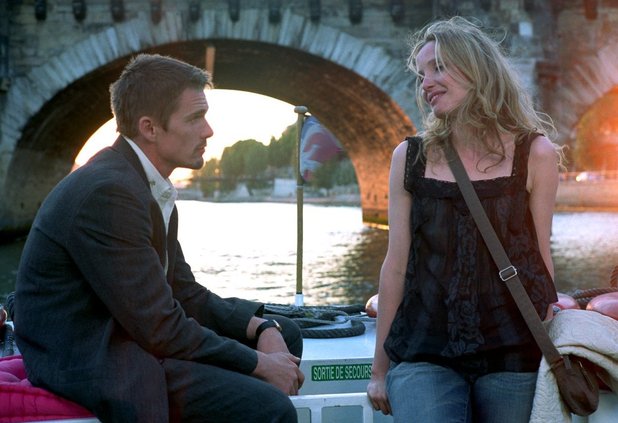
Linklater is known for utilising time as medium in his films, whether its filming story across years as in his”Boyhood” (2014) or in real time like in “Tape” (2001), “Slacker” (1991), “Dazed and Confused” (1993) which all take place within 24 hours, but the most impressive use of this limited narrative is in his “Before” Trilogy which shows a few hours between two characters; Jesse (Ethan Hawke) and Céline (Julie Delpy) in three films that are separated by approximately ten years in both the film’s time and actual time.
Beginning with “Before Sunrise” in 1995, the romantic drama follows Jesse, a young American man, and Céline, a young French woman, who meet on a train and disembark in Vienna, where they spend the night together walking around the city and getting to know each other.
The two characters reveal a lot about themselves and their perspectives on life than they normally would, since both believe they will never see one another again. The minimalist plot is what keeps the film moving naturally and focused.
The sequels follow the original’s pace and concept, with the characters meeting again in 2004 in “Before Sunset”, nine years later. Jesse has written a best selling novel about his single encounter with Céline and is on tour when he sees Céline at one of his book signings in Paris.
Jesse has a flight in the evening so they spend tbe afternoon together, talking and discussing what has happened since they last met and why they did not meet again like they had planned. They are both in relationships, Jesse even has a son, yet they express dissatisfaction with their lives.
The final sequel, “Before Midnight” follows after another nine years in 2013 and was nominated for an Academy Award for Best Adapted Screenplay with Linklater, Hawke and Delpy all co-writing this and the previous film.
6. Dr. Strangelove or: How I Learned to Stop Worrying and Love the Bomb (1964)
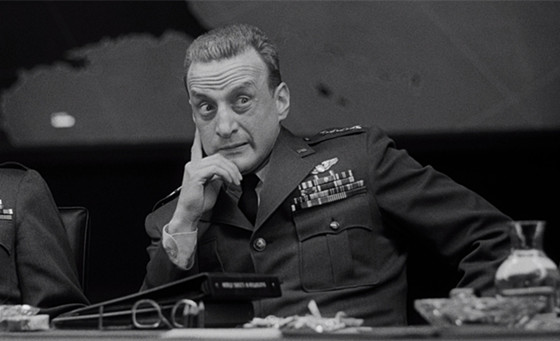
Stanley Kubrick’s political black comedy succeeds in satirising the Cold War fears of a nuclear conflict between the USSR and the US so much so that it is often cited as one of the best comedies of all time.
The film begins with Gen. Ripper (Sterling Hayden) launching an unauthorized nuclear strike against Russia since he is convinced that the commies are poisoning them by adding fluoride to the water supply.
A British liaison officer, Group Captain Mandrake (Peter Sellers) attempts to intervene in this clear overreaction based on little to no evidence. However, Ripper’s coded message goes out to airborne B-52s, and therefore the southern Major T.J. “King” Kong (Slim Pickens), to launch an attack against Russia.
Both Ripper and Major Kong can’t be accessed by President Muffley (Sellers again) and his advisers including the President’s wheelchair-bound scientific advisor, former Nazi, sinister Dr. Strangelove (Sellers a third time), who meet in the iconic War Room and are horrified by the enormity of the situation.
Major Kong was intended to be Sellers’ fourth role, but he was uncertain about the cowboy accent. Kubrick reportedly didn’t tell Pickens that the film was a comedy – he generated humour not through simply directing actors to be funny, but saw greater value with people trying to be serious and failing.
Kubrick himself was a perfectionist who went to obsessive lengths in order to get everything in his films to work just right. He famously spent a lot of time and money to make the war room’s circular table green baize (like a poker table since they are gambling with people’s lives), even though the film is black and white.
The film was nominated for four Academy Awards (Best Picture, Best Director, Best Adapted Screenplay and Best Actor in a Leading Role for Sellers) and also seven BAFTA Awards, of which it won four.
7. Dog Day Afternoon (1975)
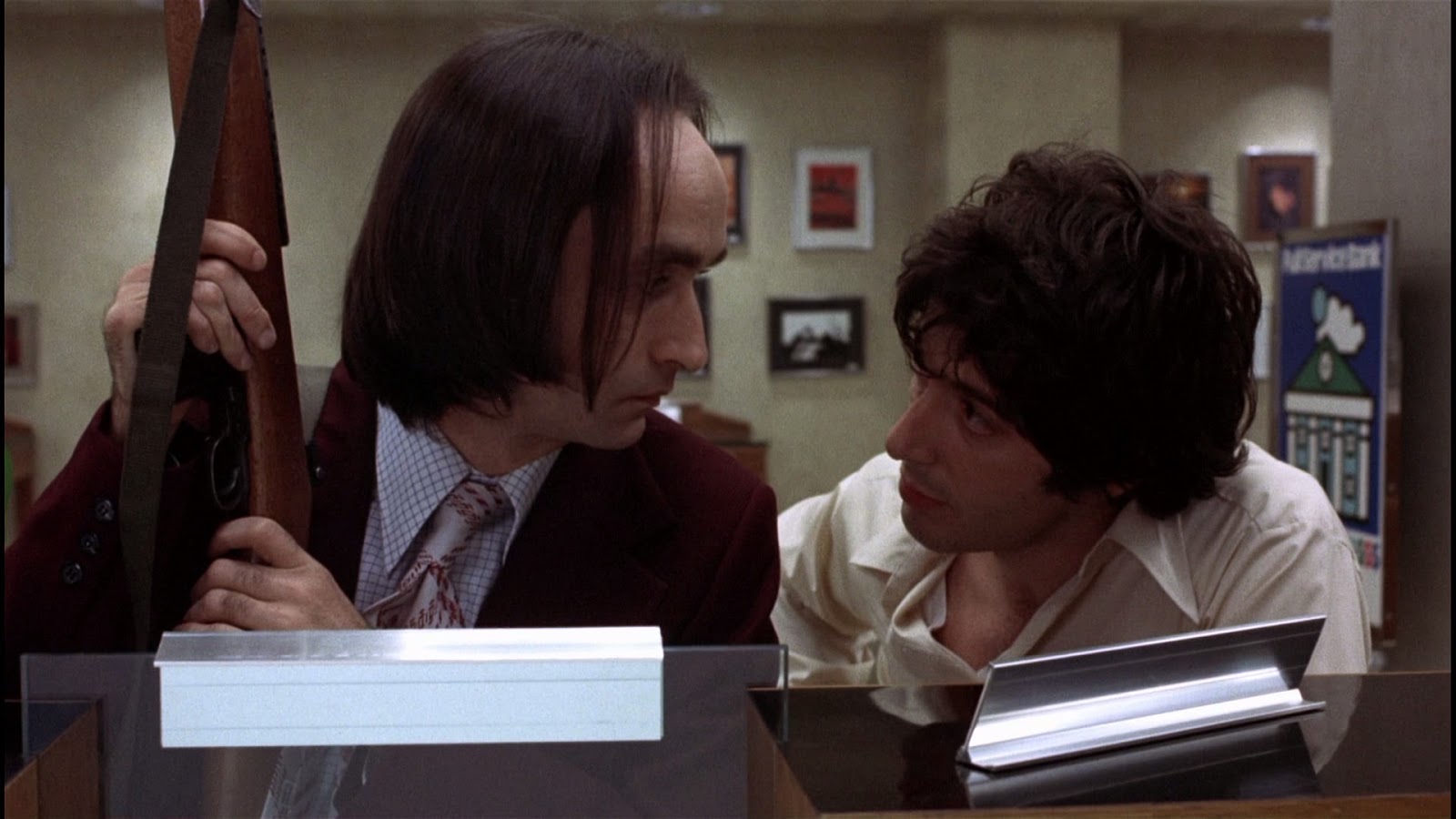
Sidney Lumet’s crime drama is based on similar real life events depicted in a ‘Life’ article “The Boys in the Bank”. The film follows ex-bank teller, first-time crook Sonny Wortzik (Al Pacino) and his friend Sal Naturale (John Cazale), as they attempt to rob the First Brooklyn Savings Bank.
The plan immediately goes wrong when Stevie, another friend of theirs, leaves and freaks out just after the robbery starts and when they discover the money in the vault was just picked up – leaving only $1,100. However, just about when they are about to leave, the police phones the bank up to inform them that they are completely surrounded.
Sonny and Sal, unsure of what to do next, camp out in the bank, hold the bank workers hostage, and work with the hostage negotiator, Police Detective Sergeant Eugene Moretti (Charles Durning).
The movie takes place almost entirely within the bank branch and the barbershop across the street, which becomes the police and FBI “command centre.” Similarly to Lumet’s previous “12 Angry Men”, the bank becomes hot, stuffy and incredibly claustrophobic. Sonny and Sal are hardly bad guys. They just needed the money and thought it would be easy to do.
Although Sal is very alarming, both of them do not want to hurt anybody, and just want to get out of there alive and free. The film is mixed with sympathy, humour, twists and tragedy and is all in all made by Lumet’s naturalist direction, Frank Pierson’s honest script and spectacularly convincing acting by Pacino and Cazale (who were reunited from Godfather Part II).
It was nominated for several Golden Globe awards and Academy Awards including Best Picture, Best Director, Best Actor in both Leading and Supporting Roles, Best Film Editing and Best Original Screenplay, which Pierson won.